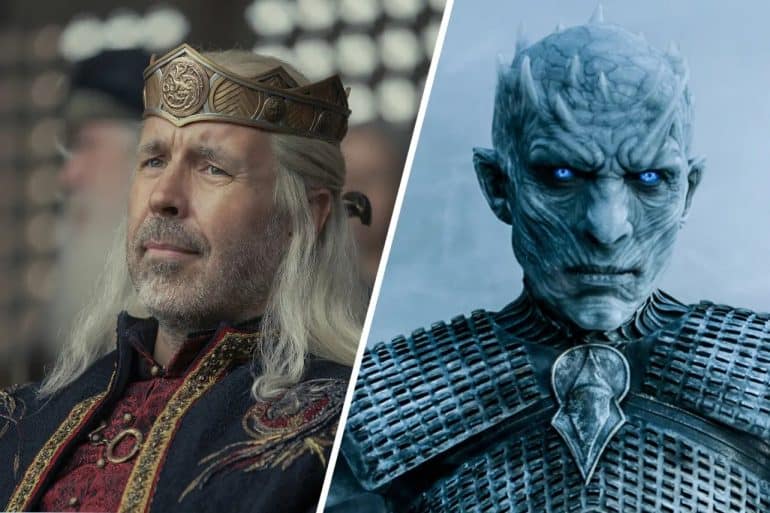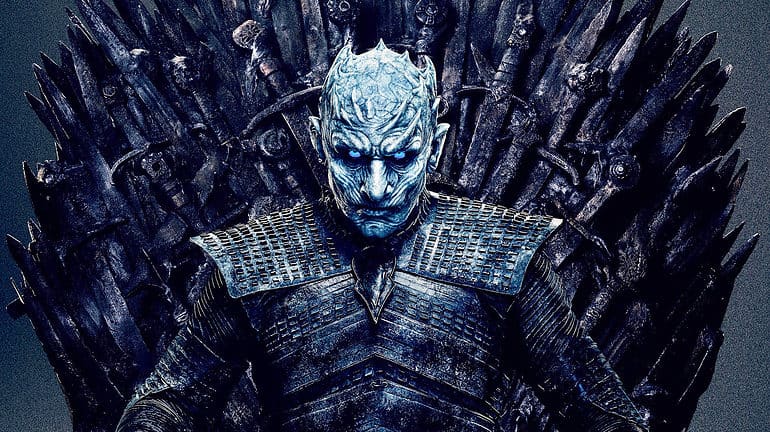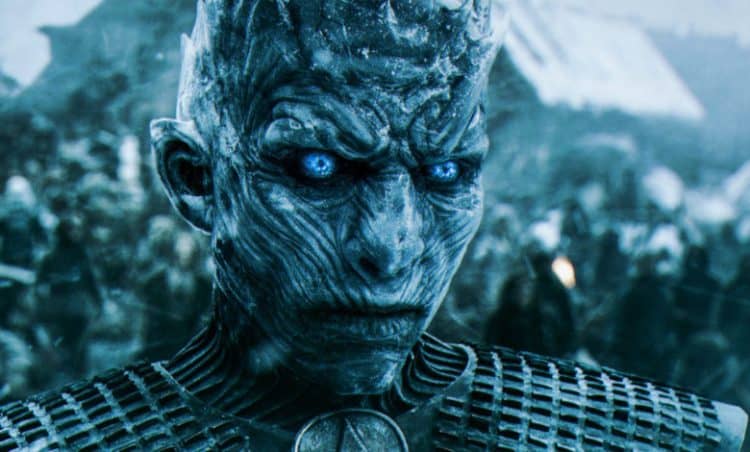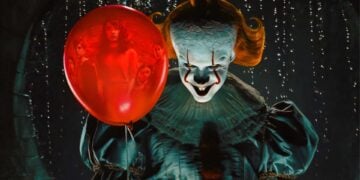In its very first episodes, House of the Dragon has already altered and added unknown details to Game of Thrones lore, including a change to the Night King’s story. But who exactly is the White Walker King and what else do we know about him?
RELATED: Game of Thrones Fans Believe Daemon Targaryen Is The Future White Walker King
Although House of the Dragon is set about three hundred years before the events of Game of Thrones, the series has been doing a stellar job as a prequel, laying down a foundation and impacting some of the events and history of the original series in some very key ways. There are a few big mysteries surrounding the Night King, namely who he really is, and also why he so desperately wanted to kill Bran Stark.
One of the Mysteries of the Night King

In the end, Bran Stark was the Three-Eyed Raven, an all-knowing and somewhat all-seeing being who held all of Westeros’ memory within themselves. Not only would killing him erase their entire history, but it would destroy any hope for the future with the complete loss of knowledge. This is the way that Game of Thrones framed the mystery anyway.
With the first few episodes of House of the Dragon, this has been reframed.
Long before Bran came into the picture, the Three-Eyed Raven was thought to have been Brynden Rivers – the bastard son of Aegon Targaryen IV. The book version was called the Three-Eyed Crow and was also said to have been a Lord named Brynden, adding to the credibility of this possibility. Brynden was nicknamed Bloodraven, and later joined the Night’s Watch and became the Lord Commander, only to eventually disappear beyond the wall.
Ancient Prophecies
At the start of the House of the Dragon series, King Viserys Targaryen was telling his daughter, Princess Rhaenyra about a prophecy that was foretold through the dreams of one of their forefathers. One of the greatest rulers of the Targaryen empire, Aegon the Conqueror, had a dream, a prophecy that changes part of the Night King’s story. He foresaw a terrible winter that would spell the end of the world of man, A Song of Ice and Fire.
The revelation of this mystery was not a part of either Game of Thrones or G.R.R. Martin’s source material.
One of the biggest changes that have been explored is the mystery of the Night King. Game of Thrones season 8 claimed that only with a Targaryen on the Iron Throne could the darkness of the Night King and the White Walkers be defeated, and the season was in turn about the Night King and his army – more specifically about the battle waged between them and the army of the living in the north, made up of all who would join, what was left of Winterfell, the Free-folk from the north and some dragons. Led by Daenerys Targaryen and Jon Snow (who also turned out to be a Targaryen as well).
And in a way, Aegon’s prophecy came true in the end.
With not only the defeaters of the Night King having been Targaryens, but the original Three-Eyed Raven also having been of Targaryen blood, it is clear that there is more weight to this prophecy than they thought. The one who watched throughout history, possibly moving puzzle pieces into place when they would have been needed, and the original all-knowing being was a Targaryen, meaning that in all ways, the Targaryens were once at least the fire that was the answer to the scourge of ice.
RELATED: Is There More Than One Night King in Game of Thrones?
Who is the Night King?

For the longest time, even after the finale of Game of Thrones, lore fans have been left wondering about one pivotal question about the show’s mythos: who is the Night King? Sure, we all know about this legendary figure in the series, but it’s baffling to see just how little we really know about the origins and ultimate goals of the White Walkers.
As is usually the case with some characters in the world of A Song of Ice and Fire, numerous fan theories have emerged discussing the Night King’s possible origins. These range from him being an undead human soldier who once served as a real king, to him having been a Lord Commander of the Night’s Watch, or even that he was created by the Children of the Forest themselves. There are so many possibilities here, especially since George R.R Martin has never explicitly stated his origin story for the character.
One thing to keep in mind throughout the whole discussion on the origins of the Night King is that the lore of the books will be of little help here. While we could find some evidence of the identity of the first White Walker in the words of Martin, the character referred to as the Night’s King in the books is vastly different from the undead abomination fans have seen in the TV show. The books have also been known to be quite vague when it comes to such things as their motivations, which makes it hard to say anything definitive about what they want or why they act the way they do.
Living Weapon
A widely accepted theory — and the one taken as fact in the show — is that the Night King was one of the First Men, who was used by the Children of the Forest to create the first White Walker.
These wights would serve as living weapons against the rapid expansion of the First Men of Westeros, who were quickly driving the Children of the Forest out of their ancestral homes. In hindsight, creating an undead army might not have been the best idea ever, but, at the time, it might have seemed like the last hope for an entire magical race.
However, the undead army turned on their creators, which led to a pact between the First Men and the Children of the Forest to fight their common enemy. This is the period of time in Westerosi history where most of the tales told by Old Nan come from — where legends such as Bran the Breaker and Lann the Clever made their names known.
Age of Heroes
Long before the events seen in the Game of Thrones show, a massive battle took place in the north. It’s said that Brandon the Breaker, King in the North, allied with Joramun, a King-Beyond-the-Wall, to put a stop to the Night’s King.
In almost every version of the story, the Kings are successful in their attacks. Brandon eventually erases the name of the Night’s King from history, effectively sentencing him to oblivion.
Before that, however, the Night’s King ruled beyond the Wall with his wife, the Corpse Queen. They resided in the Nightfort, the first castle of the Night’s Watch. This isn’t the only connection between the Night’s King and the Night’s Watch, either: in some stories, the Night’s King is also known as the 13th Lord Commander of the Night’s Watch. This gives us a possible date for the Night King’s birth, as Jon Snow is the 998th Lord Commander of the Watch, which should give us an idea of how distant the creation of the Night King is to the present day.
During this era, the ones who fought against the White Walkers must have used dragonglass weapons to fight against the undead. Things like Valyrian steel swords would have been way too hard to come by those days, and we can forget about dragonfire — the Targaryens still hadn’t arrived in Westeros in that era.
Diverging Lores
Up until this point, we’ve been mostly discussing the nature of the “Night’s King,” which is not the same entity as the Night King seen in the show. Still, we can surmise that, at the very least, some parts of the Night King’s story are connected to his TV show counterpart. Things like his connection to the Children of the Forest and their weakness to dragonglass and dragonfire are traits shared between both versions, so maybe they were both Lord Commanders with eyes as blue stars.
That said, the show went in an entirely different direction when it comes to how it treats the threat of the White Walkers compared to the books. While the novels have made it quite clear that the army of the undead might be one of the greatest threats to all life in Westeros, the show did an unexpected 180 near its end, making Cersei Lannister into a much more imposing villain than the Night King himself.
With a swift blow from her Valyrian steel dagger, Arya Stark ended the undead menace — and the Night King with it. The Battle of Winterfell concluded with minimal sacrifices — from a plot perspective — and it seemed as if the White Walkers were gone for good this time. However, with their defeat, many mysteries remain unsolved.
What happened to Craster’s sons? The pact the Crasters had made with the White Walkers and the Night King seems worthy of further inspection, but not a soul mentions them after we’re done with that particular episode.
The similarities between the Night King’s powers and warging is something that has been front and center in many popular fan theories, even if it was never fully addressed in the show. Did the Night King control Viserion just as Bran could warg? We might never know.
The role of House Stark as defenders of Westeros is a well-established part of the A Song of Ice and Fire book series, and they have always been called upon to fight off the White Walkers whenever they decided to march south. Still, some elements of its deep lore were never explored in the show — which is a shame, because parts of it would directly tie in with the backstory of the Night King.
Still, even though many moons have passed since the days of the Age of Heroes to the Present Day of Westeros, we can see a faint outline of the Night King’s real identity: one of the First Men, turned into a White Walker by the Children of the Forest, who was eventually defeated by Bran the Breaker and Joramun.
Knowing that, perhaps the mystery surrounding this legendary figure might be why he has turned out to be one of the most fascinating characters in the show, and why so many fan theories focus on him.
RELATED: Is Ser Otto Hightower the Night King or a White Walker in Game of Thrones?











Except Arya Stark defeated the Knight King.
And HOTD takes place 200 years before GOT.
As we understand every circumstances about Ageon and it’s dream he always know that the time soon going to change and prophecy is going to be true. It might be true that night walker is from the first amongst the human or might still unknow part. But the actual fear of Ageon was after his dead how the time will change and who is going to rule has he rule like an concouror. Where in series part they have already shown the 3 eyes reven in the castle of black rock.
Which means targerens are already connected with the past and the future which is still not clear in book or series.
None of what was said here makes any sense. Aegon the conquer came to Westeros 300 years before the a song of ice and fire series. The night king was created thousands of years ago by the children of the forest, long, LONG before aegon and any of his sons. The night king was one of the first men. The wall was built thousands of years ago. The three eyed raven had been there longer then the targaryens were in Westeros so it’s impossible the three eyed raven was a son, bastard or otherwise of aegon. The night king wouldn’t be anyone we know. He was made like 5000 years prior. I’m not sure where you are getting this info you put in the article but it’s entirely false. The dream of aegon about the song of ice and fire is an addition added to the house of the dragon to allow them to segue into the story already in place for game of thrones. Prophecy is the easiest way to make that happen.
Thank you for stating truth so easily.
well, the three-eyed raven is just a position like any other and the three-eyed raven was Bryden rivers. a bastard son. so maybe before you start questioning people, get your facts straight. Isn’t it true that Bran Stark succeeded Bryden rivers who technically ceased any family line once joining the night watch, became the commander, and fled over the wall? the assumption is that he met the previous raven. Pretty sure some of bryden’s lore was in fire and blood.
regardless, there are very differing views of who the night king is, depending whether you watch the show or read the books. Because in the books, the night king is the thirteenth lord commander of the nights watch, whilst in the show he was turned by the children.
Stop with your facts and research it makes the author look bad.
Yeahhhhhhh this show is obviously not canon. Why would you take anything from this show and correlate it to the original source material? This is the equivalent of fanfiction on a grander scale.